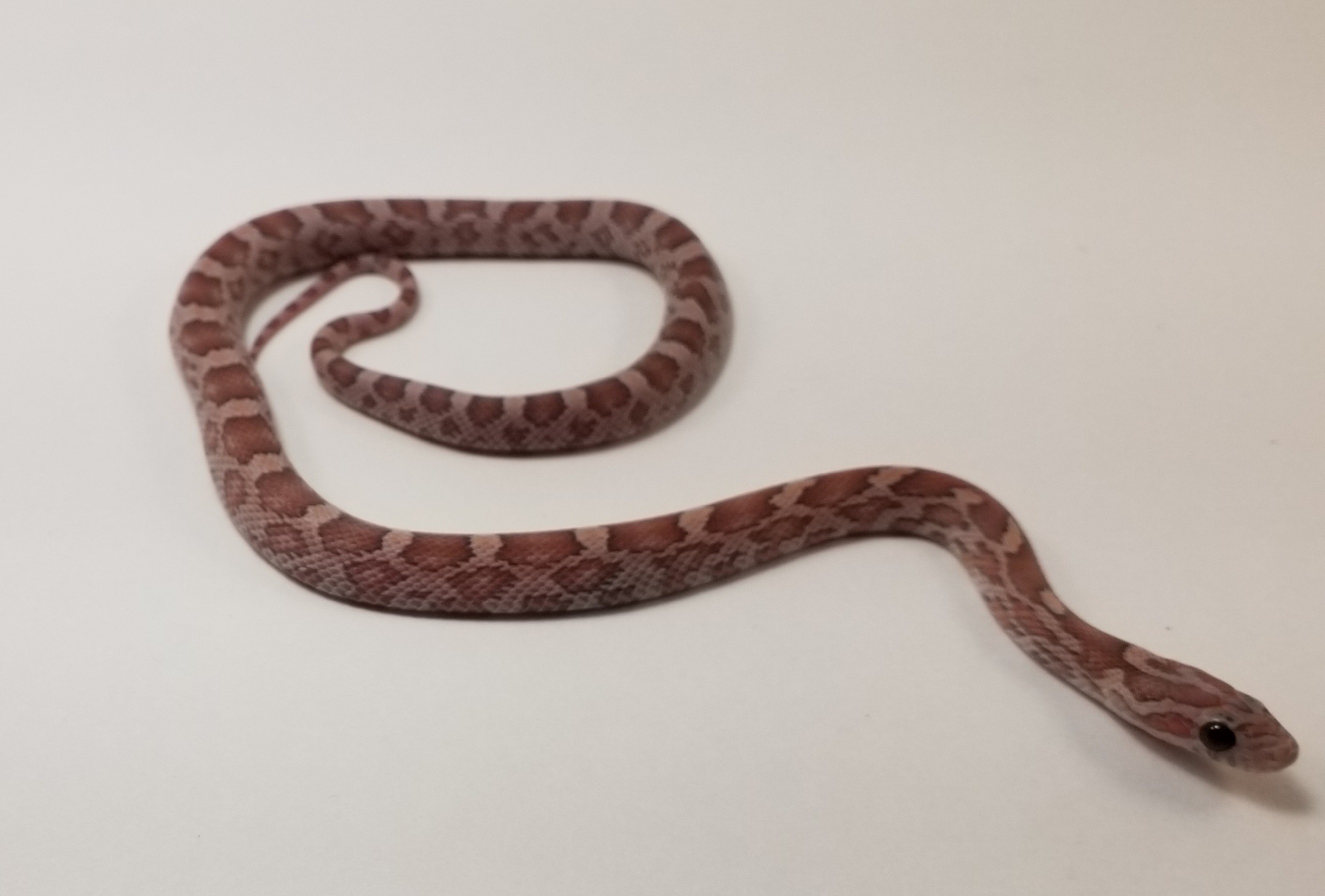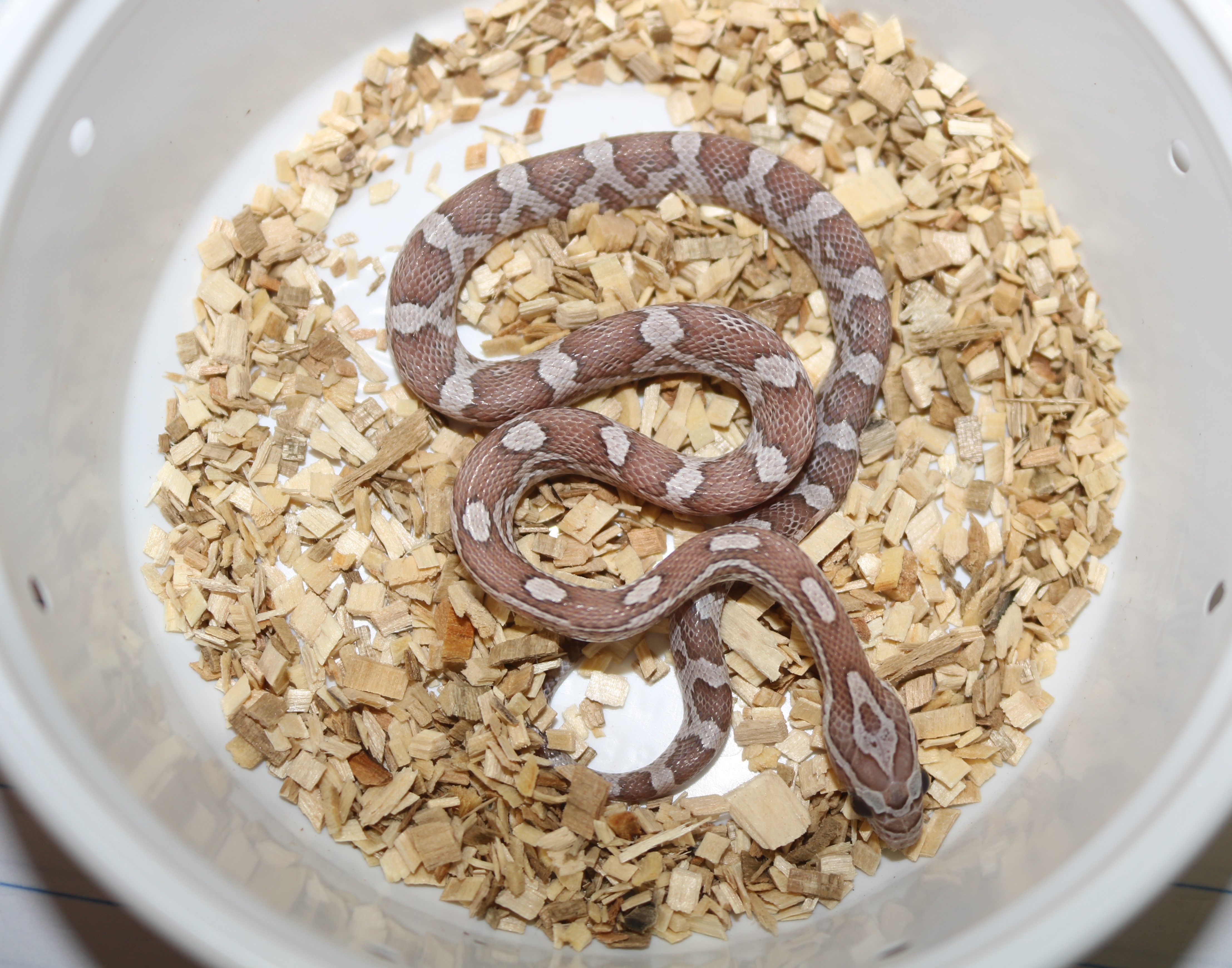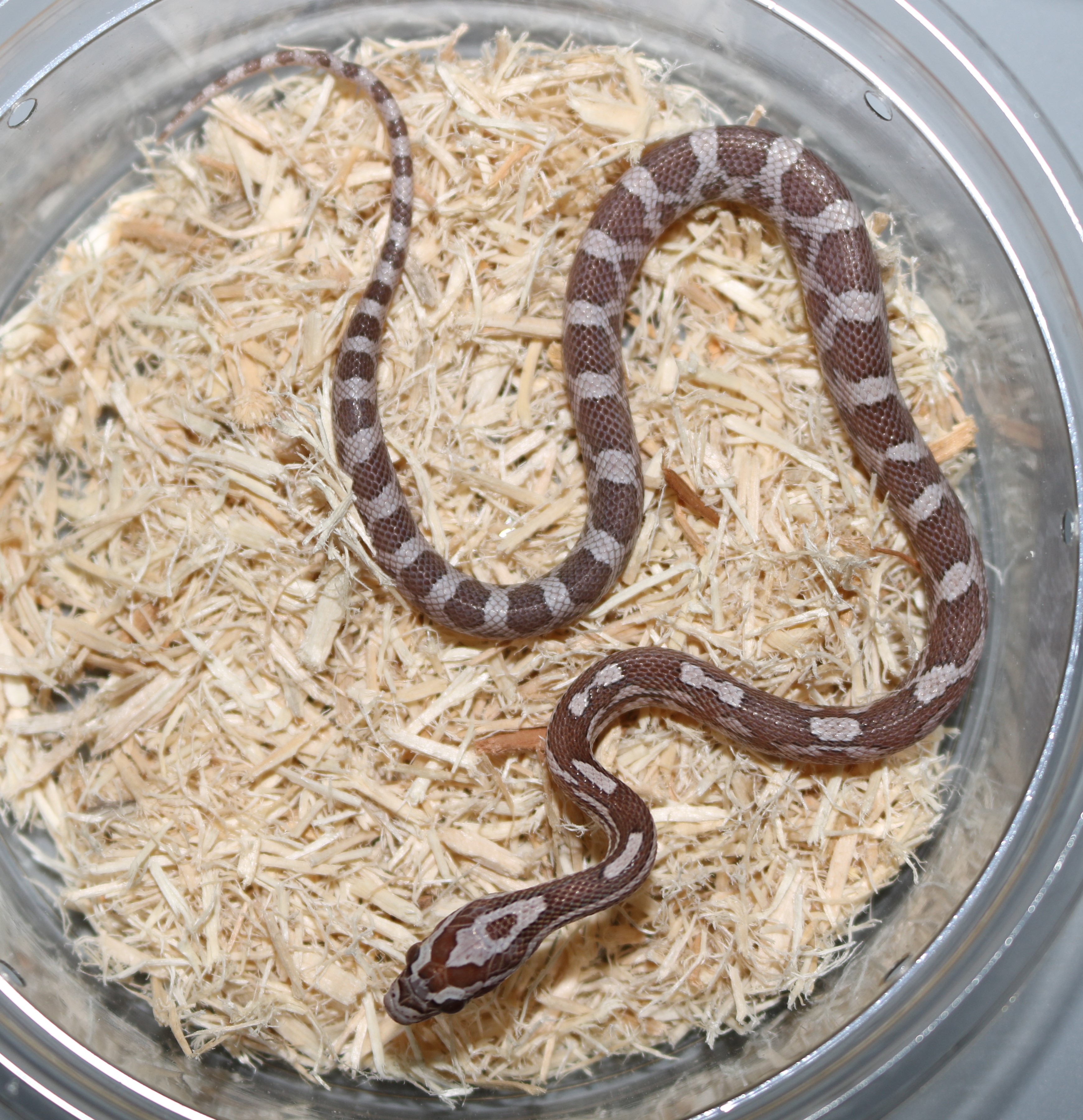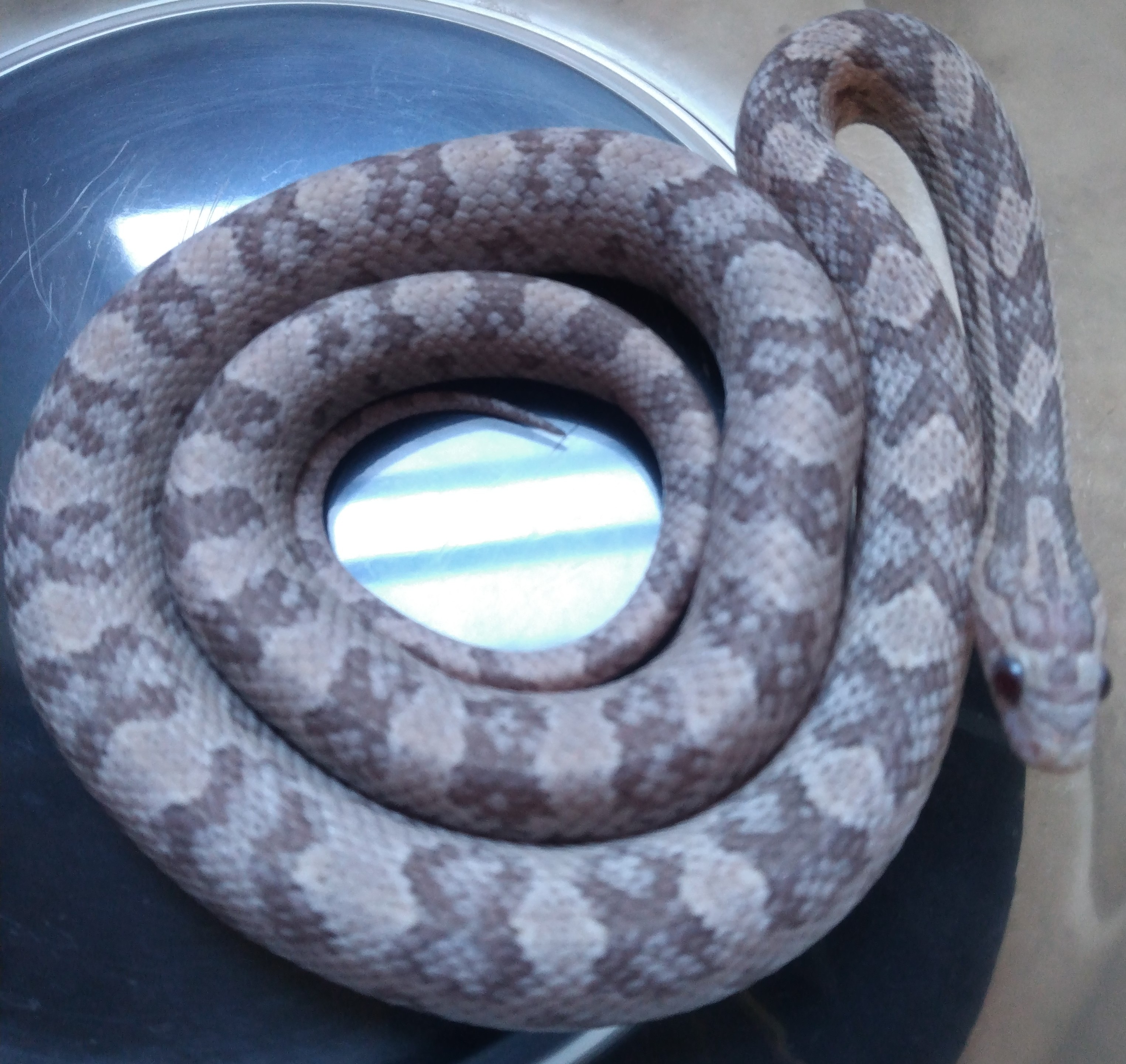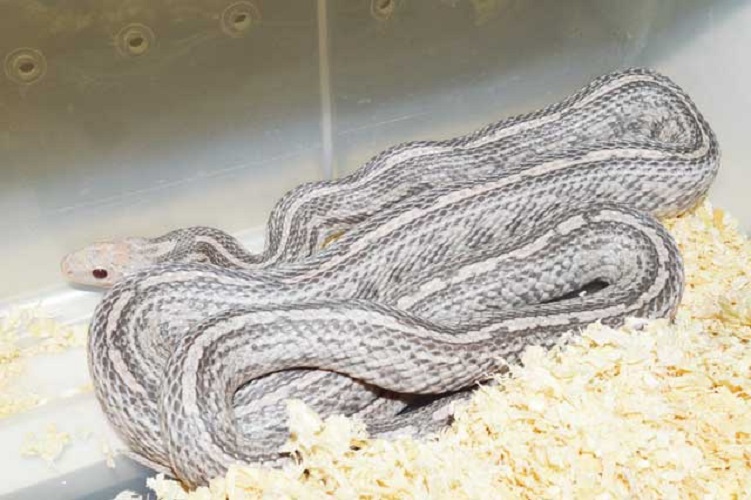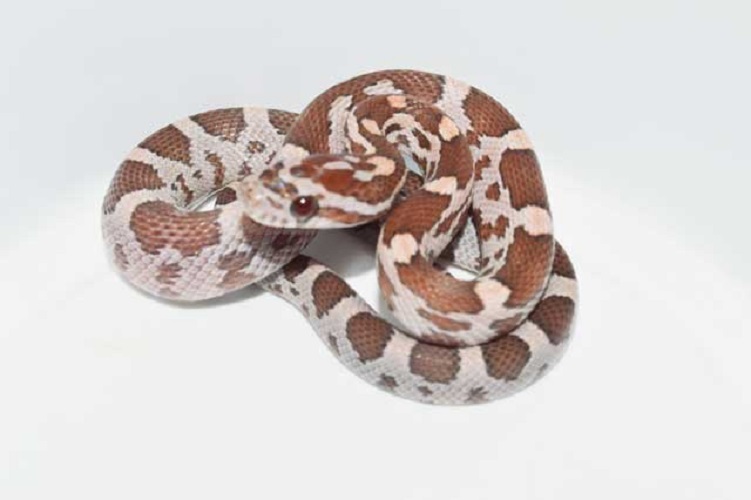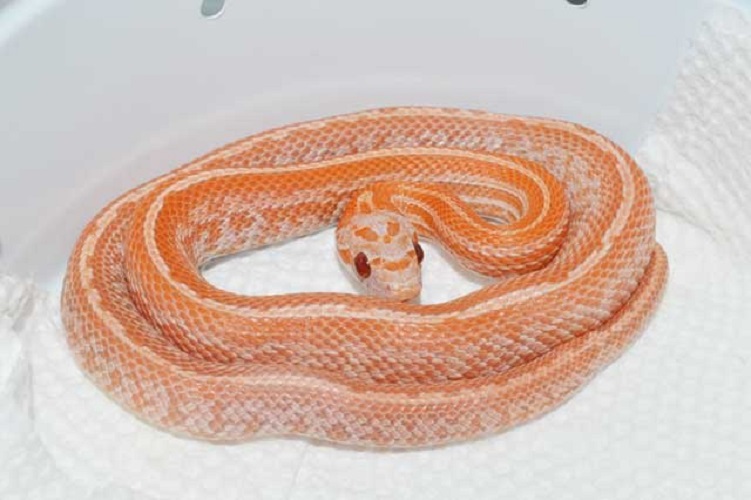Lavender
Type: Recessive
First Produced By: Rich Zuchowski
Aliases: Lavendar, Mocha
Issues: Kinking
First Produced In: 1985
Availability: Higher
Last Updated: 2022-06-02
Do you have any suggestions or corrections for this article?
Click here to contribute feedback
About
Lavender is a recessive mutation founded by Rich Zuchowski in 1985.
Issues
There is some speculation that lavenders are more prone than other morphs to hatching with spinal kinks. No breeding trials have been done to determine if the kinking is genetic and/or related to the lavender gene mutation. Most lavenders in the hobby today have been outcrossed, so the risk of kinking is most likely lowered.
History
Rich Zuchowski hatched the very first lavender from a wild caught corn bred to a snow. His wife called it mocha, due to the light chocolatey color they exhibit when newly hatched.
Appearance
Head
The head pattern of a lavender corn can encompass the range of normal head patterns, typically a V-shape behind the eyes and a wide band across the nose. As the snake matures, the head pattern may fade. Hatchling heads tend to be pale brown, possibly with pinkish or grayish undertones. The background color is generally light gray. Adult heads are usually lower contrast, with shades of pale gray, hints of pink, peach, and white. They often have pink blushing behind the eyes. The eyes of a lavender corn can vary, but they usually have a deep ruby pupil, with dark wine, slate gray, or dark blue irises.
Body
The body of a lavender corn is usually pale gray with medium gray saddles. Some specimens have shades of pink or peach. Males tend to have more color saturation than females. Lavenders often exhibit ‘frosting’ in their saddles - blotches of white where normally it would be a solid color. The saddles are usually bordered with a slightly darker color, sometimes a darker gray or pale brown. The shades of gray, pink, and peach often give a light lavender appearance overall to the snake, despite the fact that none of the scales are actually purple.
Belly
The belly of a lavender corn has the typical checker placement, but the checkers will usually match the saddle color, light gray or pale peachy brown.
Tail
The tail will match the body pattern and color.
Proven Lines
No known proven lines
Related Traits
No known related traits
Combos
- Almond (Caramel Lavender)
- Amaretto (Caramel Hypo Lavender)
- Eclipse Stripe (Anerythristic Lavender Stripe Sunkissed)
- Glacier (Amelanistic Anerythristic Lavender)
- Moonstone (Anerythristic Lavender)
- Opal (Amelanistic Lavender)
- Orchid (Lavender Sunkissed)
- Plasma (Diffused Lavender)
- Snopal (Amelanistic Anerythristic Lavender)
- Wraith (Charcoal Hypo Lavender)

